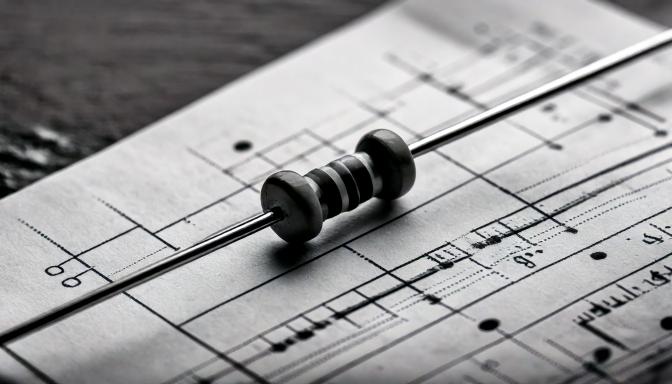Resistors are essential components in electronic circuits, controlling current flow and protecting other components from damage. While resistors are often identified by their resistance value, their wattage rating is equally important. Choosing the correct wattage ensures your circuit operates safely and efficiently. This article will explain what resistor wattage is and how to select the right one for your needs.
What Is Resistor Wattage?
Resistor wattage refers to the amount of power a resistor can safely dissipate as heat without damage. It is typically measured in watts (W). Resistors generate heat as they resist the flow of electrical current, and exceeding their wattage rating can lead to overheating, failure, or even fire hazards.
For example:
- A 0.25W resistor can safely dissipate 0.25 watts of heat.
- A 1W resistor can handle up to 1 watt of heat dissipation.
Resistor wattages are commonly available in values such as 0.125W, 0.25W, 0.5W, 1W, 2W, and higher, depending on the application.
Why Is Wattage Important?
Using a resistor with an insufficient wattage rating can cause it to overheat, degrade, or fail completely. On the other hand, selecting a resistor with too high a wattage rating might be unnecessarily bulky or expensive. Therefore, it’s important to match the resistor’s wattage to the circuit requirements.
How to Determine the Required Resistor Wattage
To choose the correct wattage for a resistor, you’ll need to calculate the power it will dissipate in your circuit. Follow these steps:
-
Determine the Power Dissipation
P=I2×RP = I^2 \times R
Use the formula:or
P=V2/RP = V^2 / RWhere:
- PP = Power in watts (W)
- II = Current through the resistor in amperes (A)
- RR = Resistance in ohms (Ω)
- VV = Voltage across the resistor in volts (V)
-
Add a Safety Margin
Multiply the calculated power by a safety factor (typically 1.5 to 2). This ensures the resistor operates within its safe limits and accounts for variations in the circuit.For example, if your calculation shows the resistor will dissipate 0.3W, choose a resistor rated for at least 0.3W×2=0.6W0.3W \times 2 = 0.6W, so a 1W resistor would be ideal.
-
Consider Environmental Factors
If the resistor will be used in high-temperature environments or in enclosed spaces with limited airflow, you may need an even higher wattage rating to avoid overheating.
Tips for Choosing the Right Resistor Wattage
- Check the Manufacturer’s Specifications: Look at the resistor datasheet for detailed information about temperature tolerances and derating factors.
- Use Resistors with Adequate Wattage Buffers: Always aim for a resistor with at least 50% more wattage capacity than your circuit’s calculated dissipation.
- Choose Appropriate Resistor Types: Power resistors are available in different forms, including wire-wound, carbon film, and metal oxide resistors. Each type has specific advantages depending on the application.
Applications and Common Wattage Ratings
- Low-power applications: 0.125W to 0.5W resistors are suitable for general-purpose electronic circuits.
- Medium-power applications: 1W to 2W resistors are used in slightly higher-current circuits, such as audio amplifiers.
- High-power applications: 5W or higher resistors are necessary for motor controllers, power supplies, or industrial equipment.
Understanding and selecting the appropriate resistor wattage is crucial for the safe and efficient operation of electronic circuits. By calculating power dissipation, adding a safety margin, and considering environmental conditions, you can ensure your resistors perform reliably and last longer. Always choose a wattage rating that accommodates your circuit’s requirements and provides room for safety.
